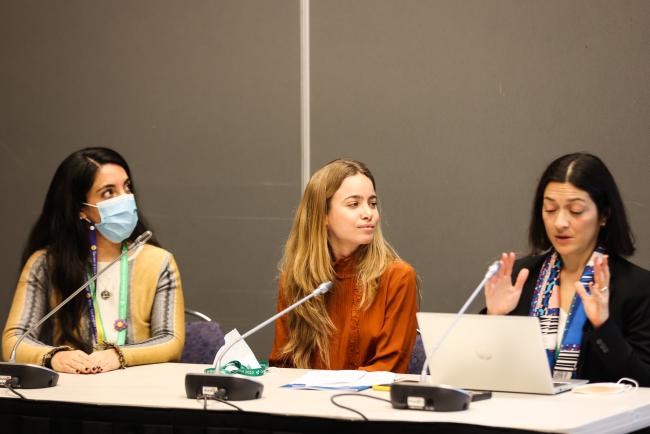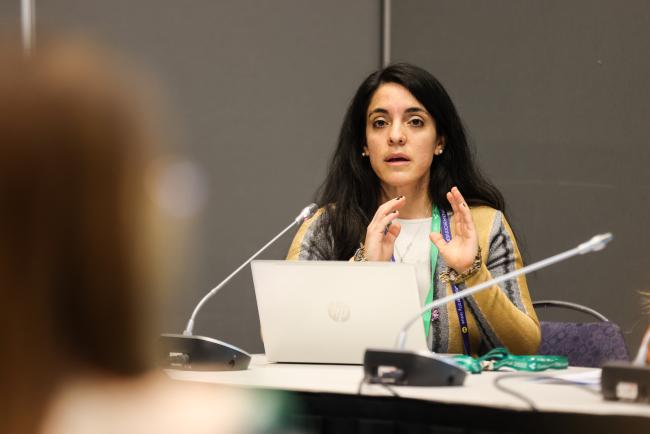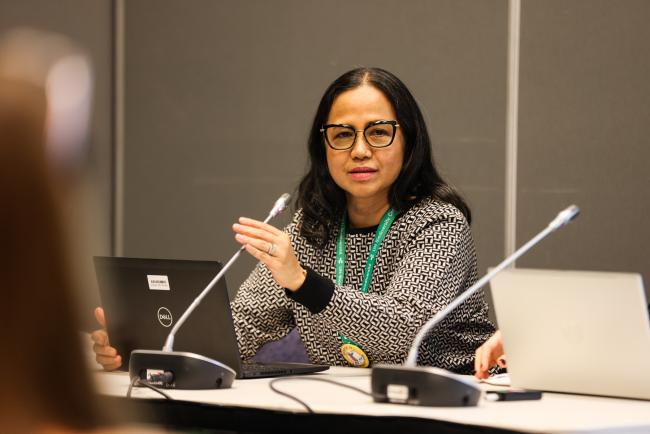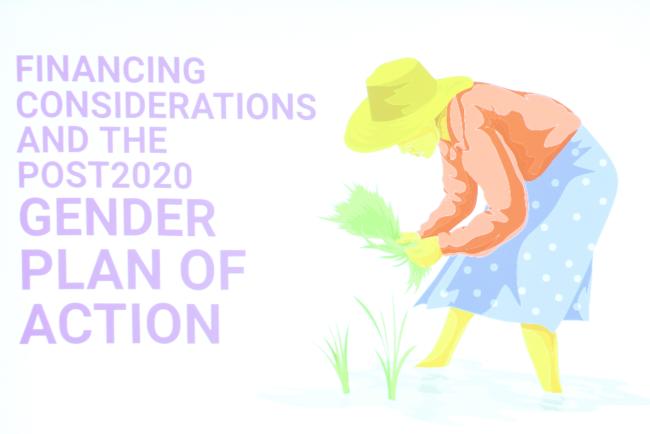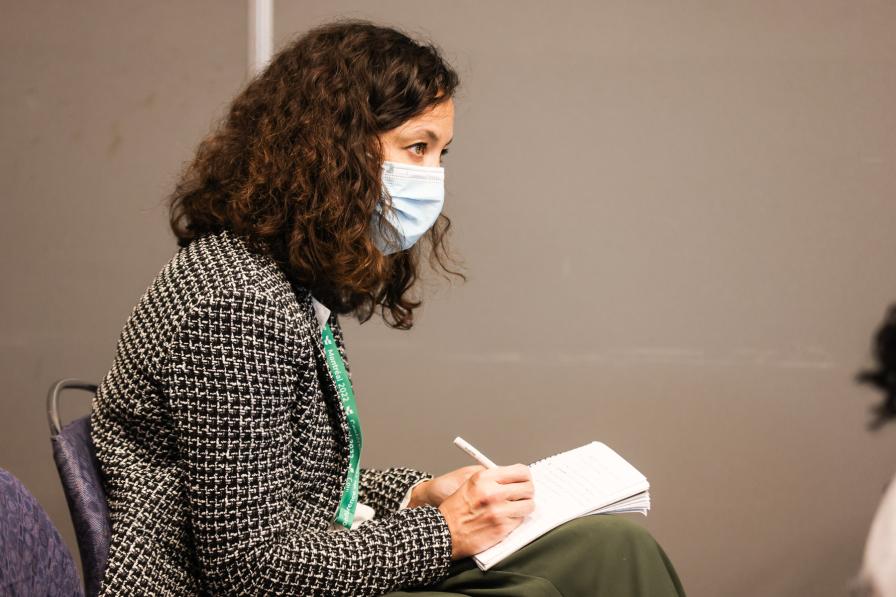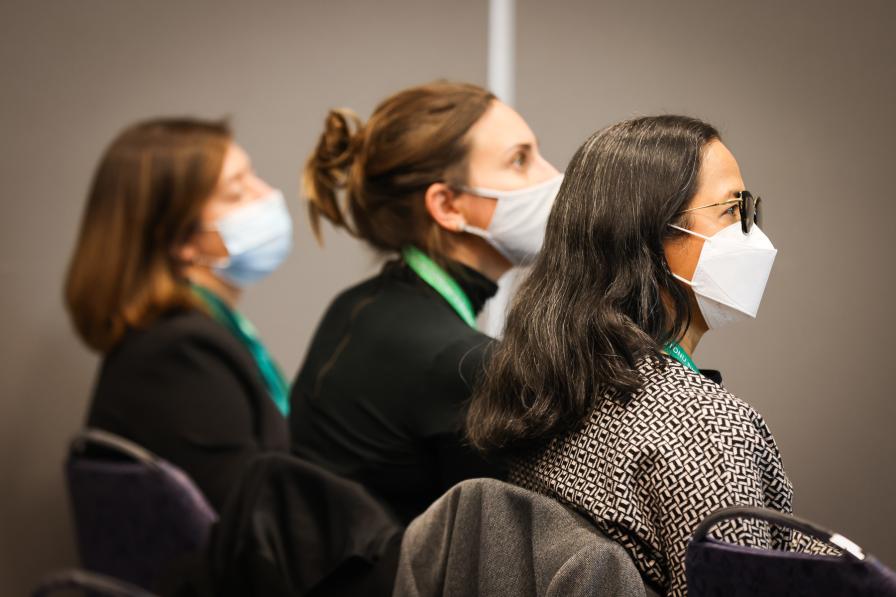About
Panelists examined the current gender-biodiversity financing gap that needs to be addressed for gender-responsive implementation of the new GBF; and explored options that can help to address the gender-biodiversity financing gap to deliver on biodiversity, climate, and gender commitments.
Financing and investment options can facilitate the gender-responsive implementation of the post-2020 global biodiversity framework (GBF). This side event, focusing on this theme, aimed to to: examine the current gender-biodiversity financing gap that needs to be addressed for the gender-responsive implementation of the new GBF; and explore options that can help address the gender-biodiversity financing gap to deliver on biodiversity, climate, and gender commitments.The event showcased national examples from Mexico and Canada, illustrating how gender inclusivity for biodiversity leads to social, economic, and environmental benefits.
Katherine Despot-Belmonte, UN Environment Programme-World Conservation Monitoring Centre (UNEP-WCMC), introduced event, noting its timeliness for COP 15 deliberations on a target for gender equality.
Dominique Blaquier, Organization for Economic Co-operation and Development (OECD), cited a 2021 OECD agreement to increase ambition on official development assistance (ODA) for climate change, biodiversity, and gender. She noted finance increased between 2011 and 2020 for biodiversity-related development funding and for research on the biodiversity-gender equality nexus. She stated that 78% of biodiversity activities overlap with climate change, although only 20% of climate change activities are biodiversity related. She highlighted technical assistance to women for managing natural resources, adding value, and improving production methods, but cautioned that more should be done to ensure project effectiveness.
Amelia Arreguin Prado, Women4Biodiversity (W4B), spoke about financing considerations and the CBD’s post-2020 gender plan of action (GPA), noting financing and capacity development as critical gaps for implementing the GPA. She described a recently undertaken rapid review of ODA-funded projects to identify initiatives and synergies that currently address objectives and outlined in the GPA. On recommendations from the review, she urged, inter alia, better integration of gender in National Biodiversity Finance Plans, to increase annual ODA for gender equality and ensure development financing delivers on the gender-biodiversity nexus, and support for gender-responsive implementation of the GBF in the Global Environment Facility’s 8th replenishment (GEF-8) cycle.
Verona Collantes-Lebale, GEF, highlighted GEF-8’s gender equality policy, implementation strategy, and guidance for: project conceptualization and design, including collecting sex-disaggregated data and developing a GPA; analysis of gender conditions in the location of project implementation and how they will be improved; and reporting of progress. She said project results should contribute to women’s: access to/control over resources; decision making in natural resource governance; and economic benefits or services. She reported good results, including increasing active involvement of women as implementers and beneficiaries, but lamented that unsystematic data collection hinders reporting and called for reporting templates. She noted a mandate to broaden inclusion to others, including youth and Indigenous Peoples, and to pursue collaboration between the GEF and the Conventions’ gender specialists.
Camila Isabel Zepeda Lizama, Ministry of Foreign Affairs, Mexico, described how gender budgeting has meant ensuring a gender perspective through a cross-cutting perspective in her country’s National Biodiversity Strategy and Action Plan (NBSAP). She noted that Mexico was the first country to pilot a gender component of the NBSAP, involving public participation across civil society and including Indigenous Peoples and local communities (IPLCs). She stressed that ministers of finance must be included in discussions on gender budgeting and described how all national policies and programmes in Mexico have resources allocated for gender. On lessons learnt, she said that a gender component must be planned from the start of a policy or programme.
Catherine Potvin, Global Affairs Canada, expressed recognition that women, especially Indigenous women, are custodians of precious knowledge but are underrepresented in decision-making processes, saying her team uses a human rights approach to financing. She highlighted: contracting project partners who will ensure women and girls’ participation and access to financing; and Canada’s calls for incorporating gender in “GBF+” policy and programming and for gender-responsive approaches in the work of GEF and multilateral development banks.
Andréanne Grimard, Colibri Catalyst, described the role of mobilizing private capital for biodiversity conservation while also having a positive impact on gender. She emphasized the importance of blended finance for sustainable land use and underscored the unique position of her organization in aggregating capital, such as, inter alia, highly concessional loans, through a single financial vehicle to be deployed to crowd in institutional investors who would not otherwise take the risks of investing in sustainable land use. She mentioned that gender-diverse management teams generate returns of 10-20% more than only men or only women-led teams and underlined a target impact per USD 100 million deployed to ensure that 30% of all investees are women-led.
Organizers: UNEP-WCMC, OECD, GEF, W4B
Contact: Katherine Despot-Belmonte, UNEP-WCMC | Katherine.Despot-Belmonte@unep-wcmc.org
For more information: https://www.cbd.int/side-events/4987
All ENB photos are free to use with attribution. For this event, please use: Photo by IISD/ENB | Natalia Mroz
To receive free coverage of global environmental events delivered to your inbox, subscribe to the ENB Update newsletter.


